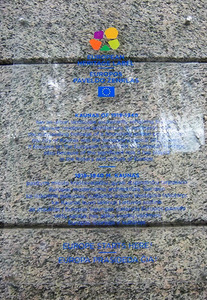Kaunas interwar modernist architecture shone bright in the sky of cultural heritage 3
In brief: In April of this year, Kaunas was ceremoniously awarded the European Heritage Label after assessment of the application submitted by municipality named "Kaunas of 1919 - 1940." Lithuania has a lot of valuable material cultural heritage but let us see why specifically Kaunas interwar modernist architecture deserves the recognition and what obligations this assessment brings.
After Kaunas became the capital, new state institutions were created: the Office of the President, the Parliament, ministries and other key institutions. City had all the bureaucratic, academic and cultural elite. There was a need for modern residential and public buildings that would fit the period. New luxury residential houses were being built in Žaliakalnis. Since then this district has gained an "elite" label. Even now, while walking in the streets of Žaliakalnis, one can see a memorial board hanging on almost every building, dedicated to an important person who had resided there.
In the European architecture of the 20th century modernism prevails. It is associated with new construction materials, a search for new ideas. Elaborate building decoration is rejected and architects focus more on functionality - to serve the convenience of the people. It was a favorable time for these ideas to appear in Lithuania since architects and engineers who studied abroad had returned. Many of them had studied in Russia.
The combination of Russian and European stylistic ideas is one of the unique features of Kaunas modernism. And while in the field of politics Lithuania was struggling to find a balance between East and West, the compromise found in architecture turned Kaunas into a model city.
There are more reasons that led to recognition of Kaunas at the European level. Kaunas is the only city in Lithuania and one of a very few cities in Europe, which has such a rich and concentrated heritage of interwar modernist architecture.
But there are two sides of the coin. Possessing a European Heritage Label brings out certain requirements and obligations. First of all, the use, functionality and possibilities of changing the appearance of the buildings will be even more limited. And this often deters entrepreneurs who are frightened of additional investments. City will have to take better care of interwar buildings. These days, some of them are in a condition that is not the most representative. Only some of the interwar buildings attract with their good appearance. And from others plaster is falling down, facades are not being taken care of and pieces of interior are destroyed. The budget will have to prepare for the additional costs for maintenance and repairs of these buildings. While the increased flow of tourists might bring economic benefits, they will not be big enough.









